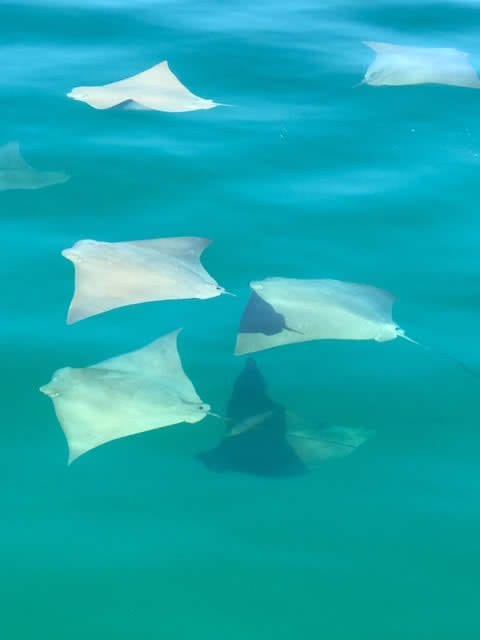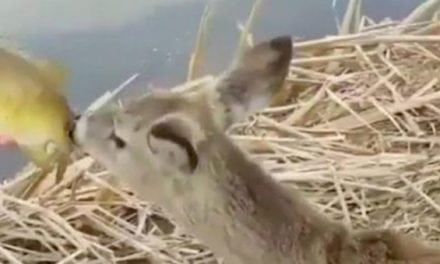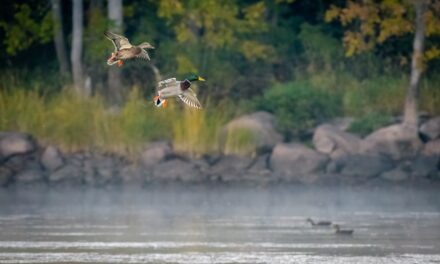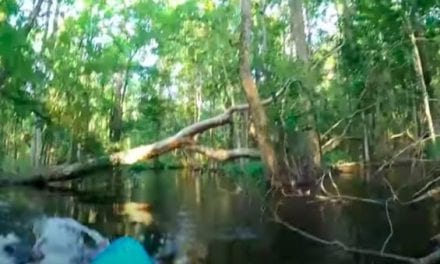by Charles R. Drago, Editor, OEL Magazine
Solitary. Mysterious. Balletic. In motion, like isolated thoughts adrift in a synaptic sea. Until, driven by urges ancient and unfathomable, they coalesce into an idea, an odyssey from randomness to intention, a seemingly chaotic dance macabre onto which the observant human brain is compelled to impose order, but which the human imagination longs only to join.
These glorious images of cownose rays moving past Anna Maria Island in Florida capture a fleeting moment in a twice-yearly migration from western Florida to Mexico’s Yucatan. Some rays travel long distances from as far away as the Caribbean and even New England to take part. Conjoined, the schools of rays are referred to as a fever.
Time for science babble: These gentle, unthreatening Myliobatiformes are of the genus/species Rhinoptera bonasus. Cownose ray populations are believed to be increasing. Studies indicate that changes in water temperature, coupled with sun orientation, may initiate seasonal mass migration.
They also suggest that the southward migration might be influenced by solar orientation, while the northward migration might be influenced by water temperature cooling below 22ºC, but further studies are needed to confirm this. The migratory congregation, thus far, has not been linked to feeding or premigratory mating activity.
Growing populations of cownose rays heighten their predation of oyster beds, a fact that may exacerbate the problem of declining oyster populations.
The Virginia Sea Grant Marine Advisory Program has considered solving this problem by proposing commercial fishing of cownose rays. There is currently no market for cownose rays even though participants in a taste test liked the cownose ray meat.
According to the International Union for Conservation of Nature and Natural Resources (IUCN), the cownose ray is listed as “Near Threatened”.
My, wasn’t all that poetic?
Few of us will be blessed with the opportunity to observe directly a cownose ray migration. And so we must submerge ourselves in still photos and moving images. Think. Feel. Let the fever of rays rage. And then accept our special noblesse oblige – the obligation that arises from the nobility of knowledge. Rachel Carson may have expressed it best:
“Those who contemplate the beauty of the earth find reserves of strength that will endure as long as life lasts. If a child is to keep alive his inborn sense of wonder, he needs the companionship of at least one adult who can share it, rediscovering with him the joy, excitement, and mystery of the world we live in.”
















